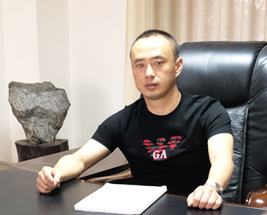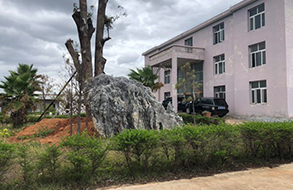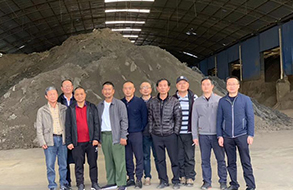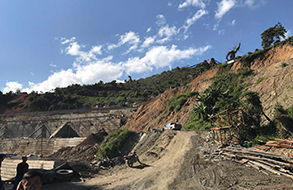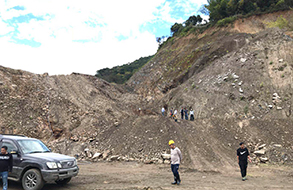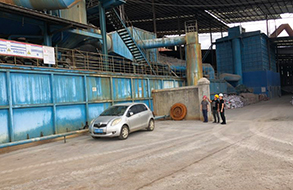Tin price to rebound in H2 2019
----Interview with Zhang Qinggang
General Manager
Gejiu Jiyuan Mining and Metallurgy Co., Ltd.
- Located in Gejiu, Yunnan, the famous tin industrial base and “capital of tin culture”, Gejiu Jiyuan Mining and Metallurgy Co., Ltd. specializes in import business of tin ore, recycling and smelting of tin-bearing tailings, etc.
- Asian Metal: Firstly, thank you for accepting our interview. Please give us a brief introduction of your company.
- Mr. Zhang: Jiyuan Mining and Metallurgy was founded and registered in Gejiu, Honghe, Yunnan, the famous "capital of tin culture", on 26 May, 2008 with a registered capital of RMB21 million (USD3.06 million). Over the past 11 years, we provided high-quality product, excellent technical support and solid after-sale service to customers all the time. We specialize in recycling of tin-bearing tailings and tin slag, smelting and sales of non-ferrous metals and others and mainly adopt fuming furnace, rotary kiln and electric furnaces in production. Besides, we also engage in import business of tin ore from Myanmar.
- Asian Metal: Your company is situated in China-Myanmar border and engaged in trading of Burmese tin ore, so could you tell us production of Burmese tin ore in the most recent year?
- Mr. Zhang: Wa State is the main producing area of tin ore in Myanmar, taking more than 90% of the country's total volume, and there are three major tin mines within this area. It's learnt that the output of tin ore dropped to about 55,000 tons in 2018 after reaching the top of 67,000 tons in 2017 and the output is expected to be only about 40,000 tons in 2019. In addition, the grade of tin raw ore decreases to current 1% from the previous level of about 3%. What is worse, no new large-scaled tin mine has been found so far. Under such circumstance, the output of tin ore would go down further. Although some tin ore reserves are found outside this state, they are far below the decline in Wa State.
- Asian Metal: Output of Burmese ore kept moving down in recent two years, how much does this situation influence Chinese tin concentrate market? Can you specify that?
- Mr. Zhang: As about 40% of tin concentrate supply in China is imported from Myanmar, decreasing output of Burmese tin ore has a strong impact on Chinese market. With lower output of Burmese tin ore, Chinese market doesn’t see increased supply. Thus, smelters are in troubles now, including declined tin ingot output of smelters and fierce competition among smelters. Specifically speaking, treatment charge for tin concentrate 40%min drops to RMB15,000/metal ton (USD2,184/metal ton) at present from the previous level of RMB20,000/metal ton (USD2,912/metal ton). Furthermore, some Chinese smelters began to cut production slightly or produced on a periodical basis from this May. If raw material supply remains tight in the near future, spot supply of tin ingot in Chinese market would be directly affected.
- Asian Metal: Supply of tin ore has been tight in Chinese market this year. Are there any effective ways to ease this tension?
- Mr. Zhang: Firstly, I attribute the supply shortage of tin concentrate in Chinese market to overexpansion of Chinese smelters, i.e. the supply of tin ore is far below the demand of smelters. Ten years ago, output of Burmese tin ore was much lower than the current level and only a few Chinese tin mines were in production, but the market saw relatively balanced supply and demand as smelters were of a small number and small scale. In my opinion, the only way to ease the tension is survival of the fittest. Next, strengthening application of renewable resources can be considered as another way. Recycling of tin-bearing scrap is an effective way for us to avoid waste of resources and cover the shortage of raw material.
- Asian Metal: Dressing plants in Gejiu will move to industrial park this September and those refuse to relocate will be required to shut down. What impacts will this action have on production and supply of tin concentrate?
- Mr. Zhang: Shutdown of dressing plants that refuse to relocate to the Gejiu industrial park won’t make great impacts on supply of tin concentrate. In those days, many dressing plants in Gejiu were constructed to process imported tin ore from Myanmar. After dressing plants in Wa State were upgraded, about 50% of tin concentrate that is imported to China now is flotation tin concentrate with a grade of 30%min, so such tin concentrate doesn’t need to be processed once again. With limited tin concentrate to be processed, a lot of dressing plants suffered a supply shortage at the end of 2018. Therefore, more than 20 newly-built dressing plants in the industrial park are able to satisfy market demand after this September.
- Asian Metal: Some tin concentrate traders turned to do business of other metals in the past two years as they failed to rebuild stocks and made wrong decisions on market trend. How do you survive and become stronger?
- Mr. Zhang: We can keep stable operation in tin industry because we always hold a rigorous attitude. With the idea of loving what you do, we require all employees to enrich themselves with information of the whole tin industry chain and business acumen. Among fierce competitions, many peers turn to other fields or terminate operation. We keep keen insights, make decisions based on elaborate analysis, continuously communicate with insiders and look for new development ways. The down-to-earth and service-oriented belief enables the company to be an industry leader all through.
- Asian Metal: Could you share your future development for the next three years with us?
- Mr. Zhang: Based on current operation, we will try to seize more market shares and engage in other sections of the industry chain in the coming three years. We consider every partner as a friend and we welcome more insiders to discuss the prospects, development and future of tin market with us.
- Asian Metal: What are your views on tin market trend in H2 of 2019?
- Mr. Zhang: The market trend in H2 depends on supply and demand. In terms of supply, new mines and decline in Burmese ore are key factors; in terms of demand, the China-U.S. trade frictions and new growth points of terminal demand would work. Differing from other base metals, tin is of stronger market attributes, better anti-interference ability against other macro factors and relatively complete and stable industry chain. In the H2 of 2019, tin ingot prices are expected to go up steadily and tin would become more popular.
